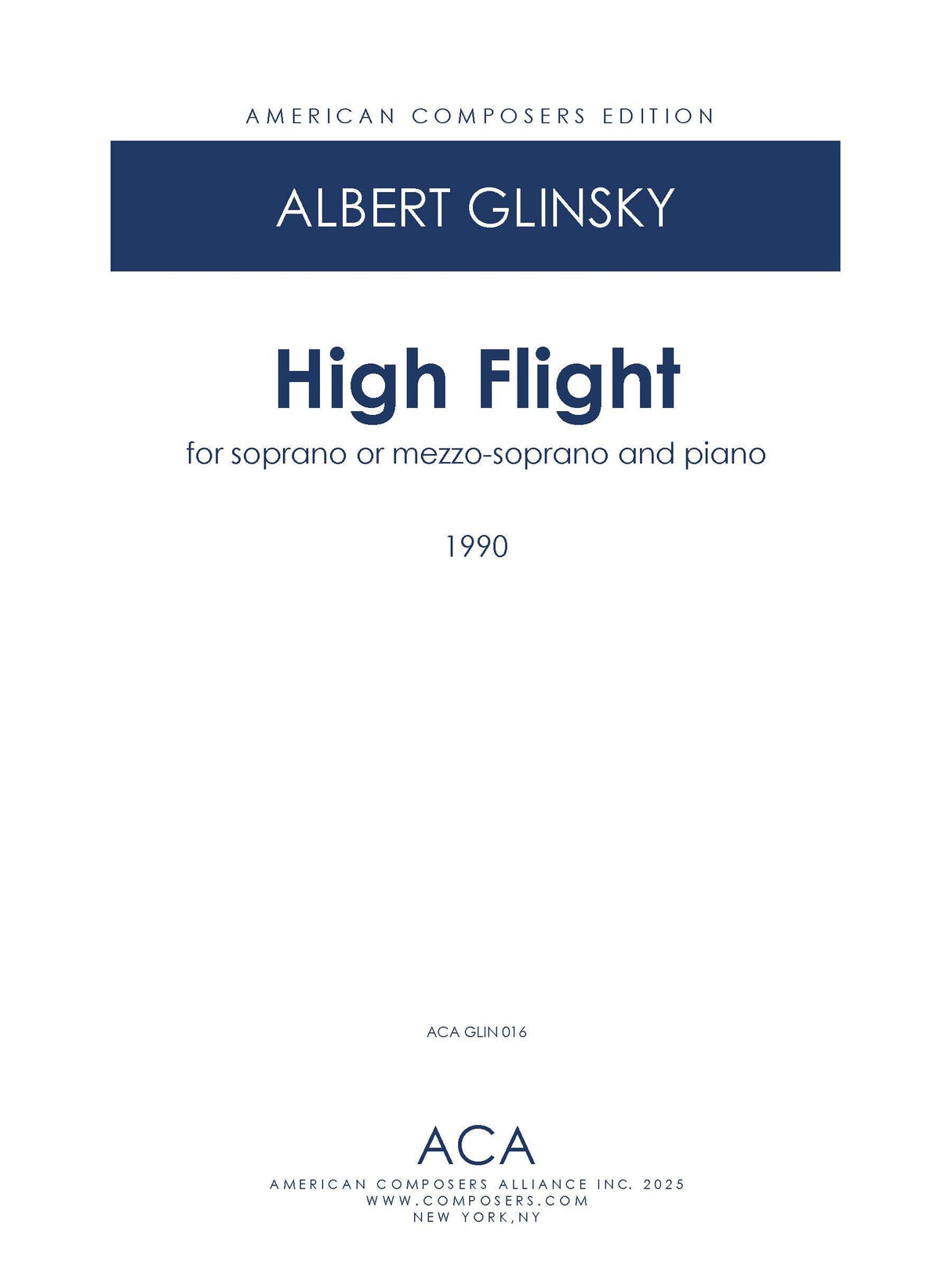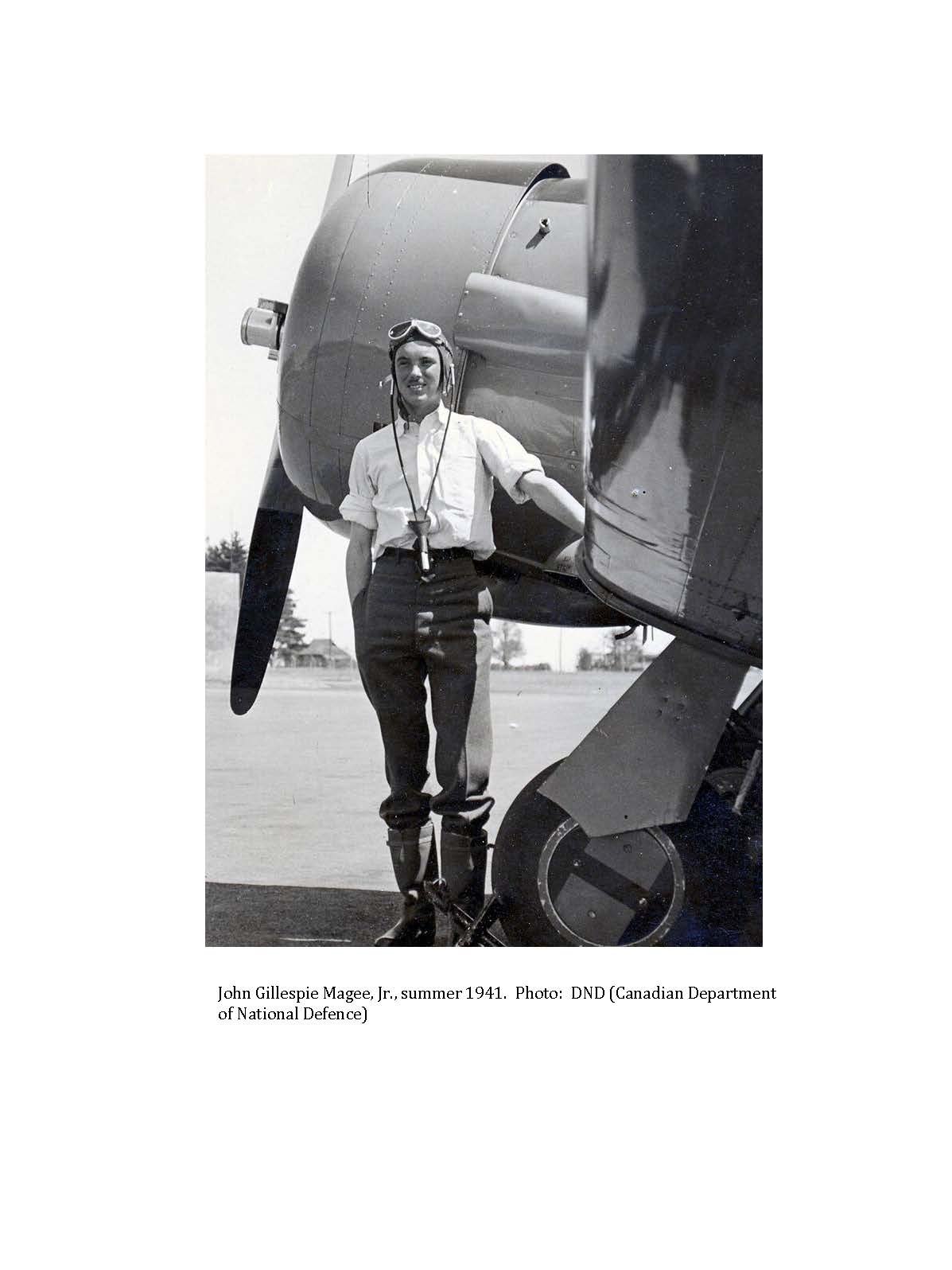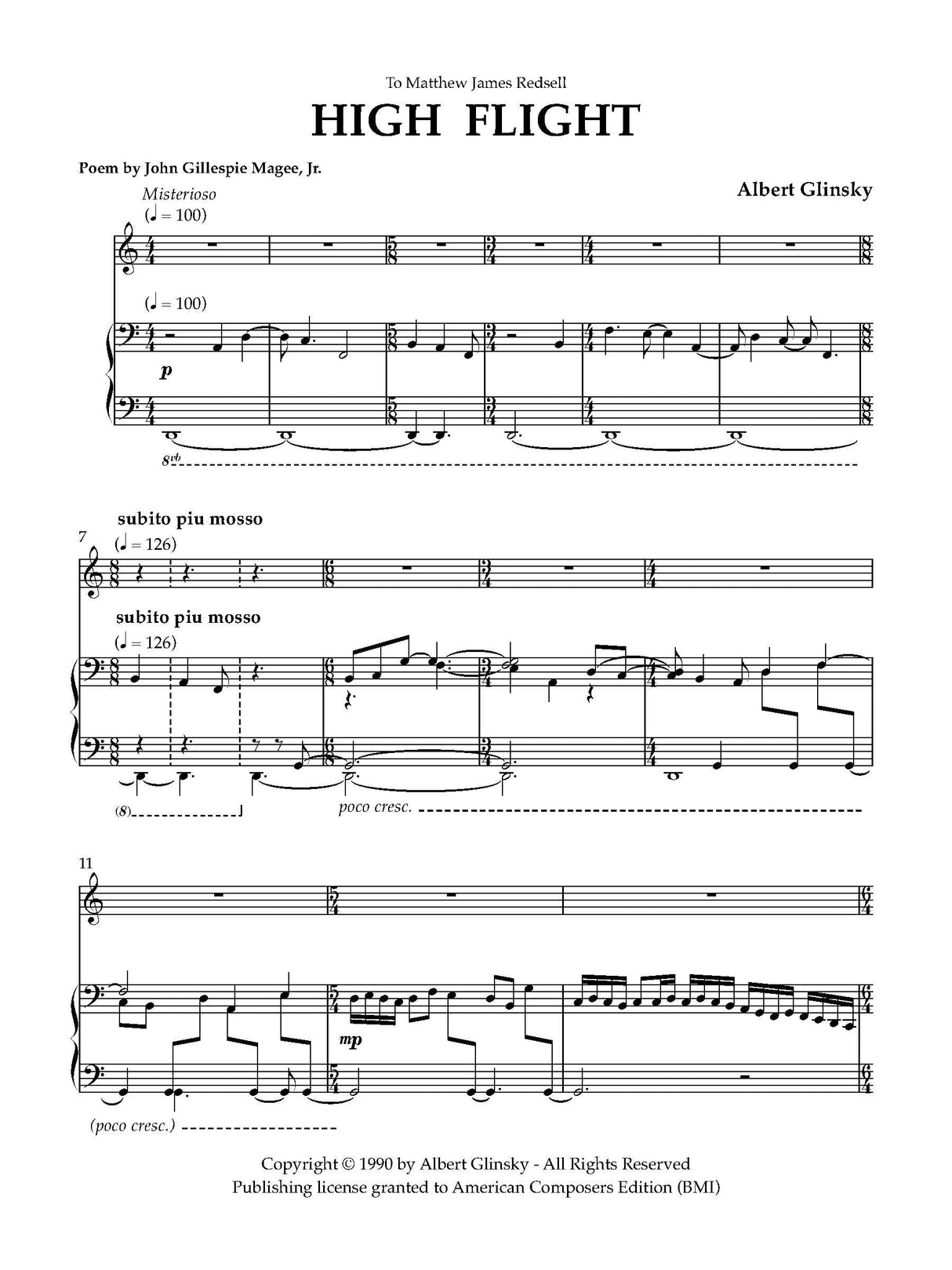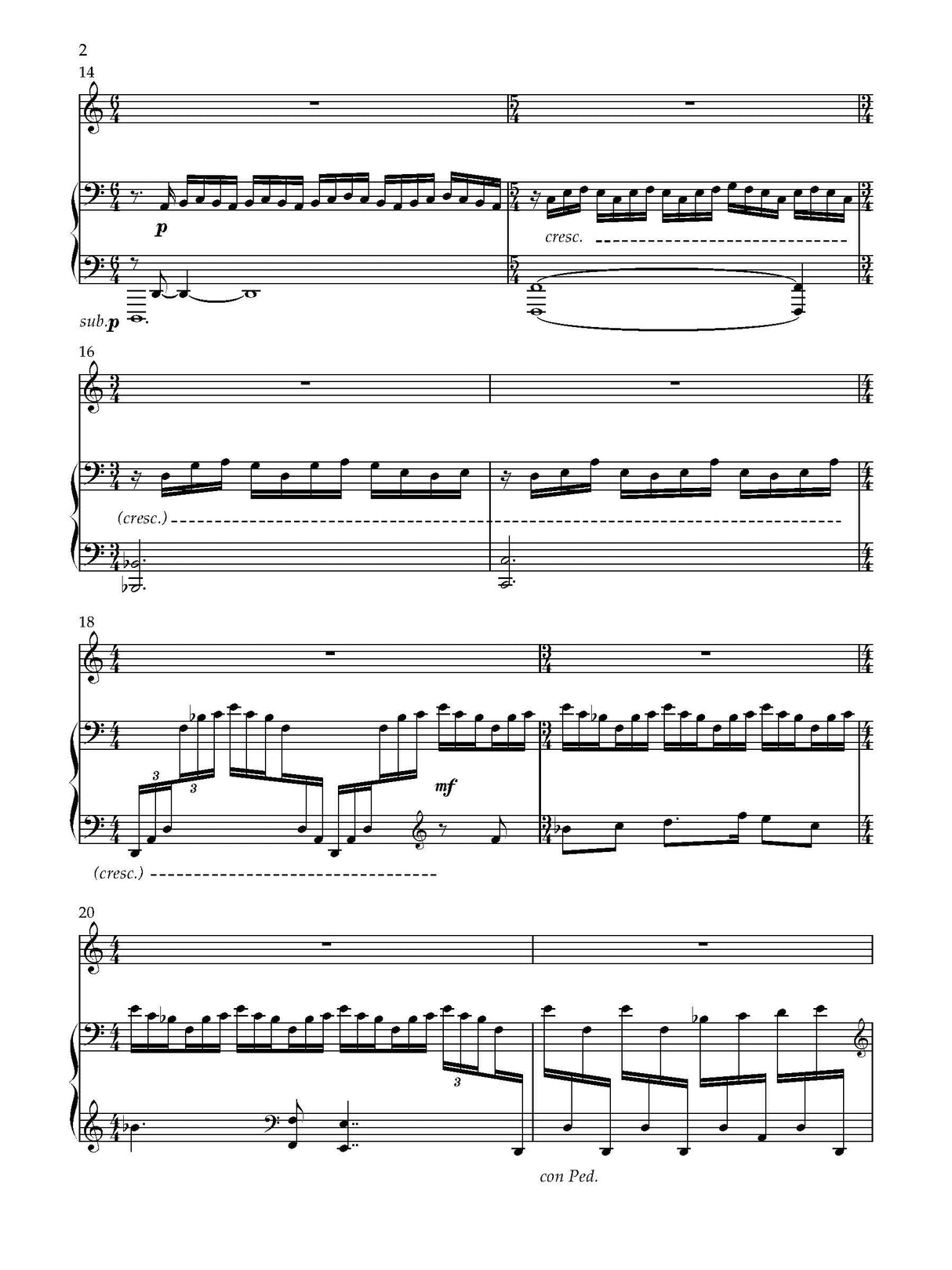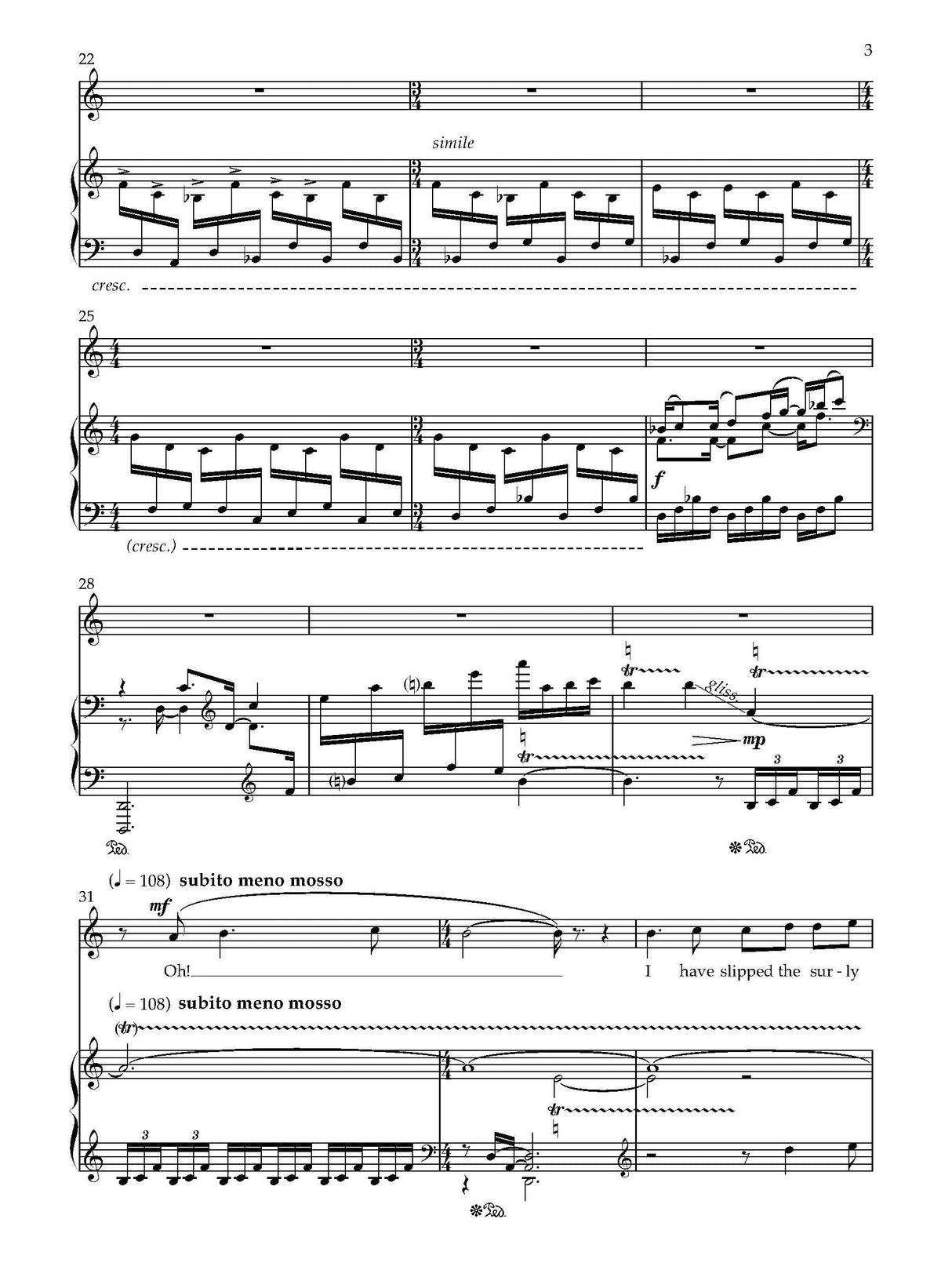Glinsky: High Flight
Expected to ship in 1-2 weeks.
- Composer: Albert Glinsky (1952-)
- Instrumentation: Piano, Soprano
- Work: High Flight (1990)
- Work Language: English
- ISMN:
- Size: 8.9 x 12.0 inches
Description
Soprano or Mezzo-Soprano and Piano
Composer's Note:
John Gillespie Magee, Jr. (1922-1941) was an Anglo-American pilot flying for the Royal Canadian Air Force during World War II. He'd enlisted as an airman for the War instead of attending Yale, to which he'd been accepted, and took part in aerial combat over Europe during the autumn of 1941. Already an aspiring poet at 16, he had received his school's coveted poetry award for a poem memorializing the World War I poet, Rupert Brooke, who'd died during that conflict, and whose work he particularly admired. Magee's sonnet, High Flight was inspired by his high altitude sallies during which he once brought his Spitfire to 33,000 feet. Dated September 3, 1941, the lines were casually scrawled in a letter to his parents along with the comment, "I am enclosing a verse I wrote the other day. It started at 30,000 feet, and was finished soon after I landed. I thought it might interest you."
On December 11, 1941, four days after the Japanese attack on Pearl Harbor that triggered America's entry into the War, Pilot Officer Magee was killed when his plane accidentally collided with another aircraft during a training exercise over Lincolnshire, England. He was just 19 years old. Back in the U.S., his sonnet began circulating when it was included in a Library of Congress exhibit in February 1942. Poet Archibald MacLeish soon hailed Magee as the first poet of the Second World War. Posthumously, Magee is universally lauded as the inspired author of High Flight, its words enshrined in the pantheon of classic poems and quoted perennially when humans are awestruck by taking to the air. Its now familiar strains have fired the imaginations of pilots, astronauts, and creators across the arts and sciences.
Since its penning, High Flight has never been copyrighted and remains in the public domain; the original manuscript resides at the Library of Congress. The current setting was created with the blessings of John Gillespie Magee's younger brother, Christopher W. Magee, along with his brothers David B. Magee and The Revd. F. Hugh Magee in a communication with the composer.
The spirit of this setting is meant to convey the joy and abandon of flight, with its spontaneous aerial acrobatics, "tumbling mirth," and "footless halls of air." The opening piano introduction depicts a takeoff, from the stillness of the aircraft's stationary anticipation at the start of the runway, through its gathering momentum, and the thrill of a buoyant updraft thrust with its liftoff. By the entrance of the voice in bar 31, we have just detached from the earth and are now fully airborne.
Publishers use a lot of words to describe what they sell, and we know it can be confusing. We've tried to be as clear as possible to make sure you get exactly what you are looking for. Below are descriptions of the terms that we use to describe the various formats that music often comes in.
Choral Score
A score for vocalists that only contains the vocal lines. The instrumental parts are not there for reference. Generally, cheaper than a vocal score and requires multiple copies for purchase.
Facsimile
Reproductions of the original hand-written scores from the composer.
Full Score
For ensemble music, this indicates that the edition contains all parts on a single system (there are not separate parts for each player). In larger ensembles, this is for the conductor.
Hardcover
Hardbound. Generally either linen-covered or half-leather.
Orchestral Parts
Similar to a wind set, this is a collection of parts. In the case of strings, the numbers listed are the number of copies included, though generally these are available individually (often with minimum quantities required).
Paperback
When publishers offer multiple bindings (e.g. hardcover) or study scores, this is the "standard" version. If you're planning to play the music, this is probably what you want.
Performance / Playing Score
A score of the music containing all parts on one system, intended for players to share. There are not separate parts for each player.
Set of Parts
For ensemble music, this indicates that there are separate individual parts for each player.
Solo Part with Piano Reduction
For solo pieces with orchestra, this is a version that contains a piano reduction of the orchestra parts. For piano pieces, two copies are typically needed for performance.
Study Score
A small (think choral size) copy of the complete score meant for studying, and not playing. They make great add-ons when learning concertos and small chamber works.
Vocal Score
A score prepared for vocalists that includes the piano/organ part or a reduction of the instrumental parts.
Wind Set
For orchestral music, this is a collection of wind and percussion parts. The specific quantities of each instrument are notated.
With Audio
In addition to the printed music, the edition contains recordings of the pieces. This may be an included CD, or access to files on the internet.
With / Without Fingering (Markings)
Some publishers prepare two copies - a pure Urtext edition that includes no fingering (or bowing) suggestions and a lightly edited version that includes a minimal number of editorial markings.
